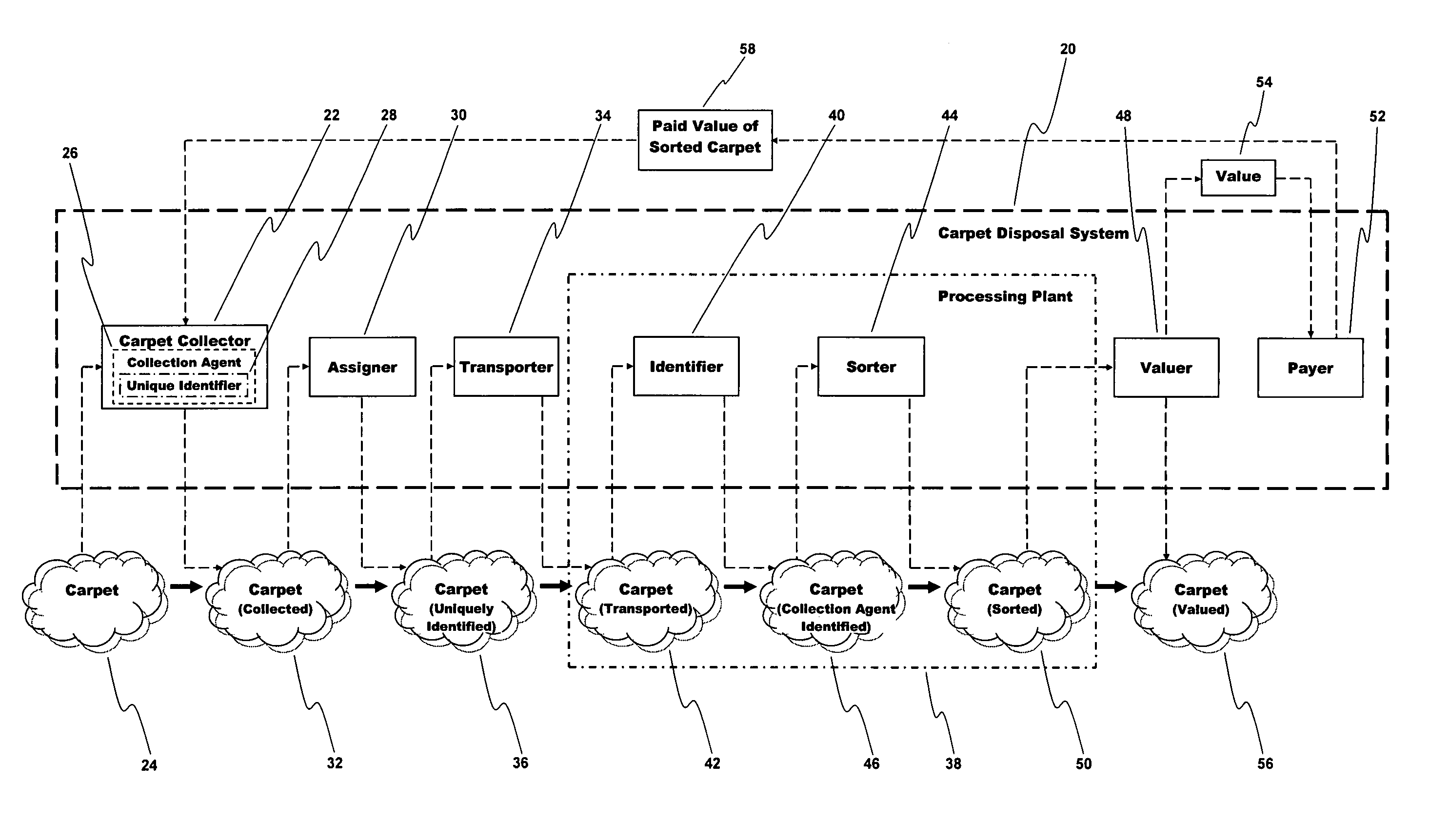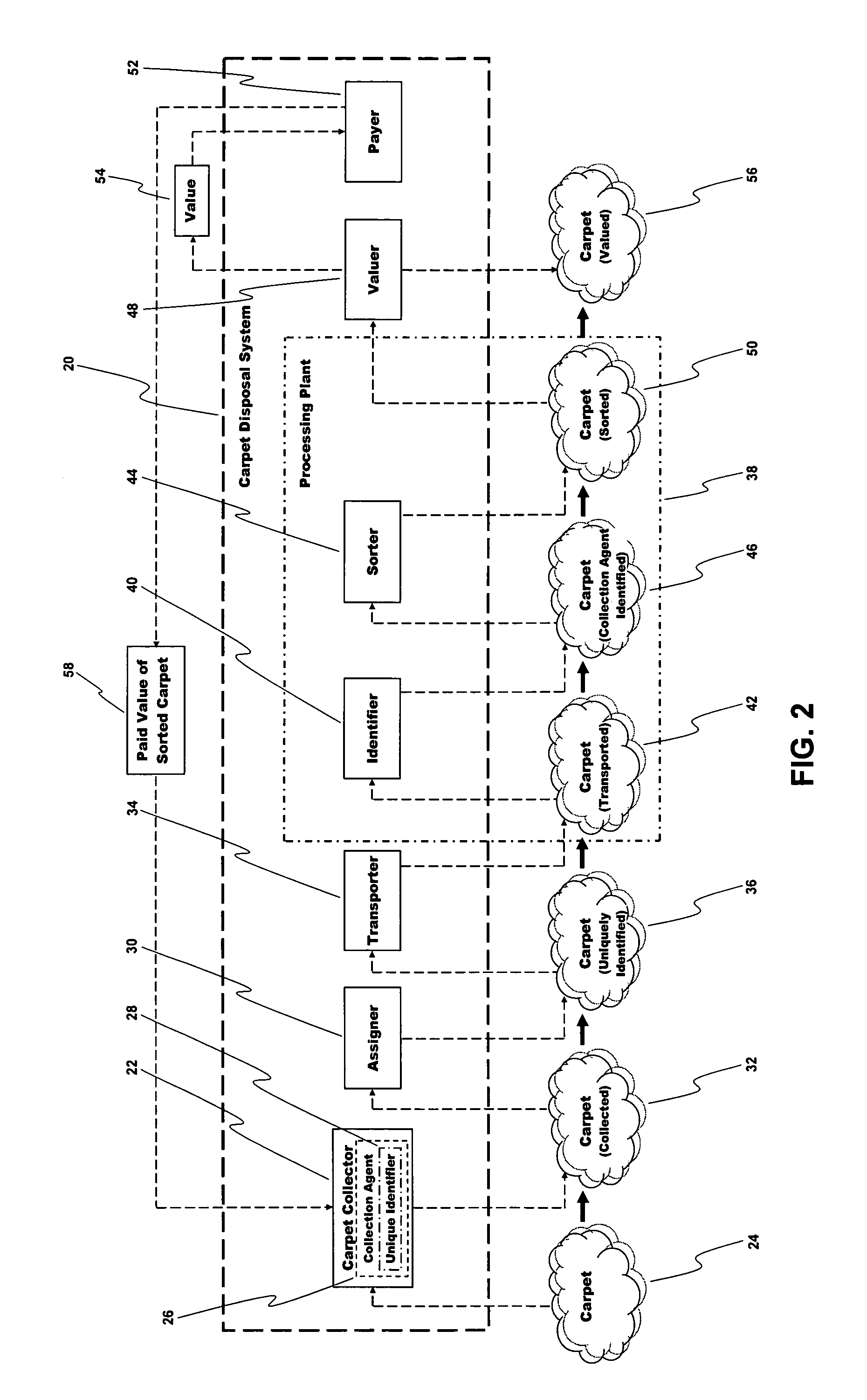System for gathering discarded post-consumer carpet, for recycling
a technology for collecting and reusing post-consumer carpets, applied in the field of collecting and reusing used and discarded post-consumer carpets, can solve the problems of not being able to achieve the effect of achieving the effect of reducing labor intensity, avoiding labor intensity, and avoiding labor intensity
- Summary
- Abstract
- Description
- Claims
- Application Information
AI Technical Summary
Benefits of technology
Problems solved by technology
Method used
Image
Examples
Embodiment Construction
[0059]As briefly summarized above, this system comprises a coordinated set of machines and other physical devices, which can be used to establish and run an efficient and economic system for collecting and processing worn and discarded post-consumer carpet, to enable recycling and other appropriate use of the polymeric fibers in the discarded post-consumer carpet.
[0060]A complete system, which will cover a substantial geographical area such as a large city, county, or other region, is designed to be run by a single company or organization, which will allow that company to interact efficiently with dozens or hundreds of independent contractors who work in that area.
[0061]Most commonly, these independent contractors will be the same people or companies that install new carpets in homes, offices, stores, and other buildings in the area, since these contractors typically also remove the old carpet from a job site, as part of the job of installing new carpet. However, any other type of c...
PUM
 Login to View More
Login to View More Abstract
Description
Claims
Application Information
 Login to View More
Login to View More - R&D
- Intellectual Property
- Life Sciences
- Materials
- Tech Scout
- Unparalleled Data Quality
- Higher Quality Content
- 60% Fewer Hallucinations
Browse by: Latest US Patents, China's latest patents, Technical Efficacy Thesaurus, Application Domain, Technology Topic, Popular Technical Reports.
© 2025 PatSnap. All rights reserved.Legal|Privacy policy|Modern Slavery Act Transparency Statement|Sitemap|About US| Contact US: help@patsnap.com



